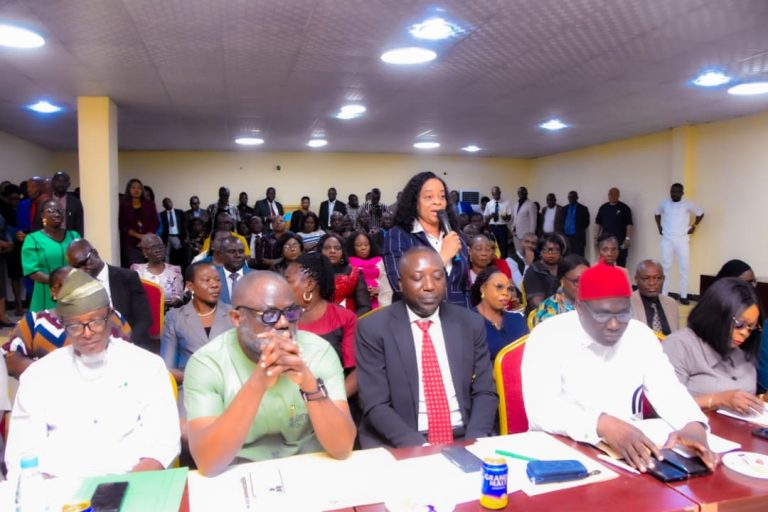
In a city that never sleeps, where the rhythm of life is set by the pulse of its public transportation, any disruption can send shockwaves through the daily routines of its residents. Such was the case when an unforeseen event paralyzed the Elizabeth Line, leaving passengers stranded for hours in a situation that tested the resilience of both the transportation infrastructure and the people it serves.
The Elizabeth Line, a crucial artery in London’s public transport system, came to a grinding halt on [date], as cables were damaged, triggering a series of events that led to extensive delays and the subsequent stranding of passengers. This incident not only shed light on the vulnerabilities of modern transportation systems but also raised questions about preparedness, communication, and the overall reliability of essential services.
The Genesis of the Incident:
The incident began when a section of crucial cables supporting the Elizabeth Line infrastructure suffered unexpected damage. The cables, which play a vital role in the communication and control systems of the rail network, were rendered inoperable, bringing the entire line to a standstill. The root cause of the cable damage remains under investigation, with early reports suggesting a combination of factors, including wear and tear, environmental conditions, and potential human error.
Stranded Passengers: A Harrowing Experience:
As the news of the cable damage spread, the immediate concern shifted to the passengers who found themselves trapped in the underground carriages, suspended between stations. Reports from affected passengers highlighted a myriad of challenges, including discomfort, anxiety, and a lack of information. Many described the experience as claustrophobic, with the absence of natural light amplifying the sense of isolation.
As the hours passed, the lack of ventilation in some sections of the stranded trains became a growing concern. Passengers took to social media to share their experiences, posting photos and videos that depicted the growing frustration and discomfort inside the carriages. The ordeal was particularly challenging for vulnerable groups, such as the elderly, children, and individuals with pre-existing health conditions.
Communication Breakdown:
One of the critical aspects that exacerbated the situation was a breakdown in communication. Passengers reported a lack of timely and accurate information from the authorities, leading to confusion and anxiety. The dearth of updates left commuters in the dark about the severity of the issue, the expected duration of the delay, and the measures being taken to resolve the situation.
In an era dominated by technology and instant communication, the failure to keep passengers informed added an extra layer of frustration. Authorities later attributed the communication breakdown to the complexity of the incident and the challenges in relaying accurate information in real-time. However, this incident underscored the need for robust communication protocols during emergencies to ensure the welfare of those affected.
Emergency Response and Rescue Efforts:
As the severity of the situation became apparent, emergency response teams swung into action. Evacuation procedures were initiated to safely remove passengers from the stranded trains, with priority given to those in need of medical attention. Emergency services, including paramedics and rescue personnel, were dispatched to the affected stations to provide assistance.
The evacuation process, however, was not without its challenges. The confined spaces within the underground tunnels complicated rescue efforts, requiring a meticulous and coordinated approach. The operation was further complicated by the need to ensure the safety of both passengers and rescue personnel.
Lessons Learned and Systemic Vulnerabilities:
The Elizabeth Line incident served as a wake-up call, prompting a comprehensive review of the city’s transportation infrastructure. While the immediate focus was on repairing the damaged cables and restoring services, attention also shifted to identifying systemic vulnerabilities that could lead to similar incidents in the future.
One key area of concern was the maintenance and monitoring of critical infrastructure components. Aging systems and components, if not regularly inspected and upgraded, can become points of failure, jeopardizing the entire network. The incident prompted a reassessment of maintenance protocols and investment in technology to proactively identify and address potential issues before they escalate.
Additionally, the importance of a robust and transparent communication strategy during emergencies became evident. The incident highlighted the need for authorities to disseminate accurate and timely information to passengers, alleviating anxiety and fostering a sense of control in challenging situations.
Investments in Resilience and Future-Proofing:
In the aftermath of the Elizabeth Line incident, discussions emerged regarding the need for significant investments in the resilience and future-proofing of transportation systems. Modernizing infrastructure, implementing state-of-the-art technology, and adopting predictive maintenance practices were proposed as critical steps to mitigate the risk of similar incidents in the future.
City officials and transportation authorities committed to allocating resources to upgrade aging components and enhance the overall reliability of the Elizabeth Line. The incident served as a catalyst for a broader conversation about the importance of infrastructure investments in maintaining the efficiency and safety of public transportation networks.
Community Impact and Public Perception:
Beyond the immediate consequences for the affected passengers, the incident had a broader impact on the community and public perception. Commuters who rely on the Elizabeth Line for their daily commute faced disruptions that rippled through their professional and personal lives. Businesses dependent on the smooth functioning of public transportation also felt the repercussions, with losses incurred due to delays and absenteeism.
Public perception of the transportation system’s reliability took a hit, raising concerns about the ability of the city’s infrastructure to handle unexpected challenges. Rebuilding trust became a priority for authorities, necessitating transparent communication, swift action, and tangible improvements in the aftermath of the incident.
Conclusion:
The incident of passengers being stuck for hours on the Elizabeth Line after cable damage serves as a stark reminder of the intricate web that supports urban transportation. It exposed vulnerabilities in infrastructure, communication, and emergency response protocols, prompting a reevaluation of the systems that millions depend on daily.
As the affected cables were repaired and services gradually restored, the city embarked on a journey of introspection and improvement. The lessons learned from this incident have the potential to reshape the future of urban transportation, with a renewed commitment to resilience, transparency, and the well-being of the passengers who form the lifeblood of the city’s bustling arteries. The Elizabeth Line debacle, while a challenging chapter in the city’s history, may ultimately pave the way for a more robust, responsive, and reliable public transportation system.







